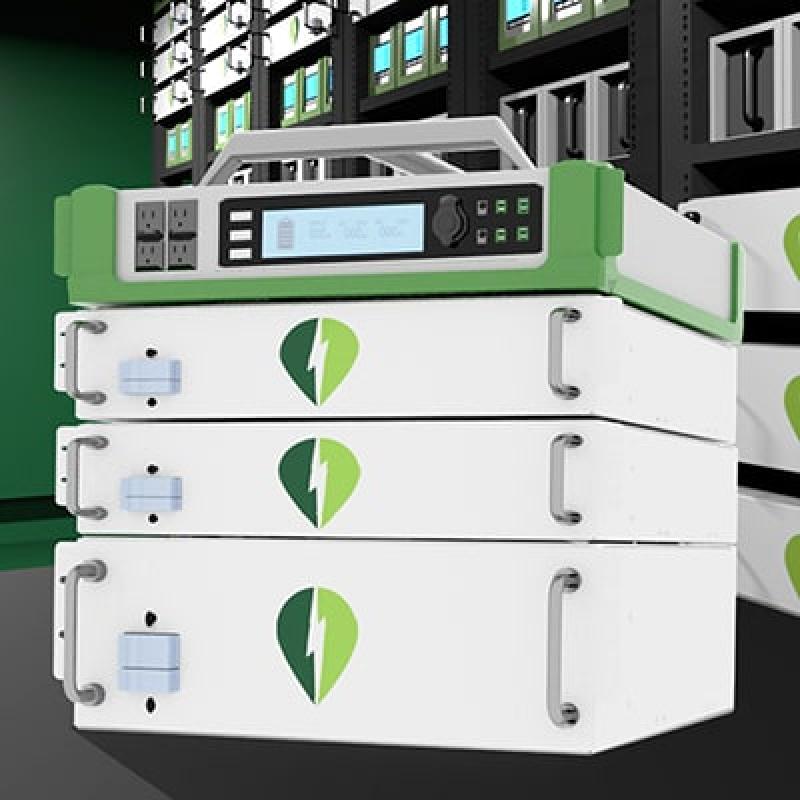
Edmonton-based Grengine – which states it has developed the world's first stackable, modular energy storage system – has also appointed a new CEO in Erin Rand.
Founder and former CEO Connie Stacey is now the chief technology officer of the company, formerly known as Growing Greener Innovations.
Stacey founded the company in 2014 after she spent over 15 years in software development. Rand has previous experience implementing strategic operational initiatives at companies like PlasticBank, ServiceRocket, IBM and Brocade.
The portable Grengine Power System is plug-and-play, aimed at replacing diesel generators, particularly in remote communities. The modules can be easily stacked without the aid of a technician.
They are also chemistry-agnostic, meaning any battery chemistry can be accommodated.
“I chatted with a lot of tradespeople. 'Would you use a battery?' And the immediate response was, ‘I would use a battery in a second just for the silence.’ But you can't refill a battery, like you can a gas cap. Okay, there's the problem. This is where the problem lies . . . they’re not a DIY, right?” Stacey told SustainableBiz.
“What if you could just use the batteries like Lego bricks, like building blocks, you could just stack them up or swap them in and out when they were needing to be refilled?”
Growing Greener Innovations to Grengine
The company’s first project was a smaller solar generator in October 2016. It is available in 12 countries, but Stacey explained the problem was the company didn’t have the marketing dollars to “make a bigger splash” and had to begin development on a larger product to scale appropriately.
A prototype for the current product was developed in 2017, and the patent was issued in 2019.
Grengine produces all of its systems in-house in Edmonton, although it is in the process of building out a much bigger facility next door. Currently, it can produce about one megawatt-hour annually, while the newer location will provide approximately 100 megawatt-hours once fully automated.
For Stacey, the same need to scale that resulted in the Grengine Power System led to the decision to bring on Rand as CEO.
“I've been working with Connie for a couple of years as an advisor. We met during at (an) Alberta tech accelerator. And when I talk about her company, at that time, it was just her company,” Rand said. “When I explain what we do, I found that people . . . Grengine resonated, right?”
“Connie is still the visible lead, the visionary of the company, but is now actually transitioning into the technology lead,” Rand continued. “So she's continuing to evolve the technology, and also owning all of the big important relationships we have (with) partners and key customers.”
Initiatives using Grengine’s system are already underway with the Department of National Defence via an R&D project, the International Minerals Innovation Institute and an undisclosed Indigenous community in rural Canada.
Aside from being compatible with any renewable energy, Grengine’s system is capable of replacing an individual battery cell in the pack instead of discarding them all, as is industry standard. This amounts to both cost and environmental savings.
Grengine’s future
The company has an 11-year plan to hit its targets a year before much of the world’s sustainability goals in 2035.
“We mapped out for us to really make the make the impact we wanted, we have to be an $8.7 billion company in 11 years,” Rand explained. “And we chose that number very specifically, because that's $1 of value for every human who's projected to be on the planet in 2034.”
Part of that plan involves being choosy – both in how Grengine deploys future facilities and its choice of customer. With the battery chain being global, it is not typically a green supply chain. So when it comes to future sites, the company is focused less on growing exponentially larger every time than it is making sure locations are as close as possible to the raw materials needed while still servicing road and rail.
Instead of building one 100-gigawatt factory, Grengine might build 100 one-gigawatt factories, as Rand summarized. The company plans to expand to other North American facilities in the next three years.
“We have some ideas in mind of where we'd like to go. But it is partly driven on who those partners are, because we are really picky about who we're willing to work with. Batteries have the great, great advantage of being incredibly in demand,” Stacey said. “So we have lots of customers. The question becomes, we don't want to give up any part of our ethical journey to do it.”
She also mentioned a grant application for a method of manufacturing that will be both more efficient and environmentally friendly, but did not get into specifics.
In terms of expanding on its battery technology, Grengine is naturally very protective of its IP, although Stacey did drop a hint.
“The system itself is being quite scalable and modular where the patents currently live,” Stacey said. “There's two big pieces (of) protectable IP that we hope to see coming out in the very near future and one we may even be demonstrating this summer . . . for the military.”










